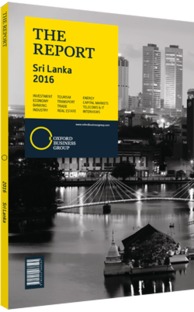Patali Champika Ranawaka, Minister of Megapolis and Western Region Development, on transforming Colombo: Viewpoint

The very proposition of making Colombo a globally competitive city has come to be viewed from a broader perspective, including the entire western province centred around Colombo. This approach was born out of the need to consider not just economic prosperity, but also social justice and environmental sustainability. On the economic front, Sri Lanka’s long stagnation in the lower-middle-income territory has underscored the need for the development of a large geographic region through intense economic activity. Such activity is measured by what is known as economic density, which is the value of the aggregate economic output generated per sq km. On this scale, our capital currently ranks well below Bangkok, Kuala Lumpur and a number of Indian cities.
A region of intense economic activity is an essential asset in the realisation of the economic potential we possess as a nation. For example, realising the potential of our geographical location through a maritime hub would provide an ideal platform for translating the advantages of our demography into productive economic capacity. Our megapolis is in a good position to rapidly leverage such advantages in terms of selling goods, education and health services, electricity supply, and ICT infrastructure.
From an economic standpoint, this would be the most prudent way around the current deficiencies in our macroeconomic environment, which is characterised by adverse factors, such as massive trade deficits. Economic activity at a higher density in a wider geographic region in the form of a megapolis is indeed the most prudent way of realising the dream of achieving high-income country status by 2030. To achieve this, Sri Lanka needs to reach a per capita GDP of at least $12,000.
On the social justice front, no one should forget that we are a nation with unfortunate memories of at least two uprisings triggered by an absence of social justice. While some uncertainties continue to be a huge developmental challenge, expanding income distribution is hugely desirable. We plan to implement a rigorous and comprehensive programme to relocate those living in informal settlements and ensure their effective socioeconomic inclusion in society at large.
On the environmental front, although environmental sustainability constitutes one of the three major pillars of sustainable development, it has never been given due consideration in any of our previous urban development plans for Colombo or its suburbs. As much as 30% of urban landmass in the Western Province is low-lying and serves as a natural basin for holding excess water during heavy rains. All construction activities have to take adequate measures for the protection and proper management of these areas. The concept of green cities will be adapted as the guiding model environmentally. Development will comply with measures to mitigate global warming and climate change.
There are a multitude of issues to be solved including livelihood for slum dwellers, schools for our children, issues pertaining to health services and of course inefficiency of the transport sector, which is a main impediment to economic growth. Besides this we will launch a comprehensive programme to resolve the housing issue where the absence of a proper land policy has resulted in houses being built in every possible drop of land.
In the new policy, the state of our ICT infrastructure will not only be fully developed but optimally utilised in all spheres of activity. The concept of smart cities will provide the guiding model in this regard. We must join hands as one single family if we are to realise the achievable goal of having a future Sri Lanka with an economically prosperous, socially equitable, environmentally green and functionally smart megapolis in the Western Province.
You have reached the limit of premium articles you can view for free.
Choose from the options below to purchase print or digital editions of our Reports. You can also purchase a website subscription giving you unlimited access to all of our Reports online for 12 months.
If you have already purchased this Report or have a website subscription, please login to continue.

